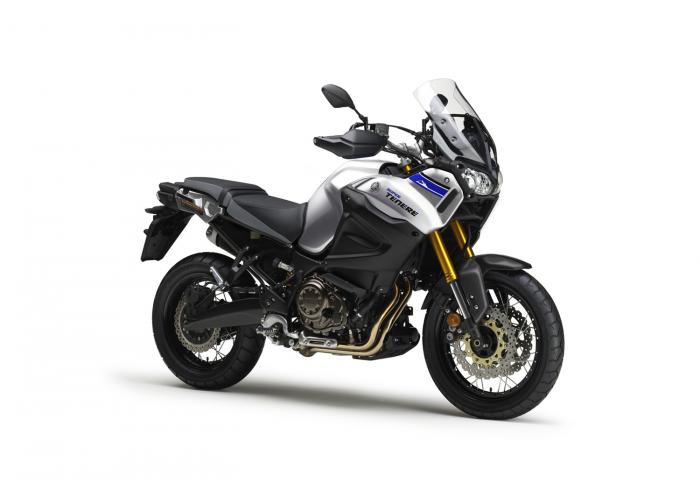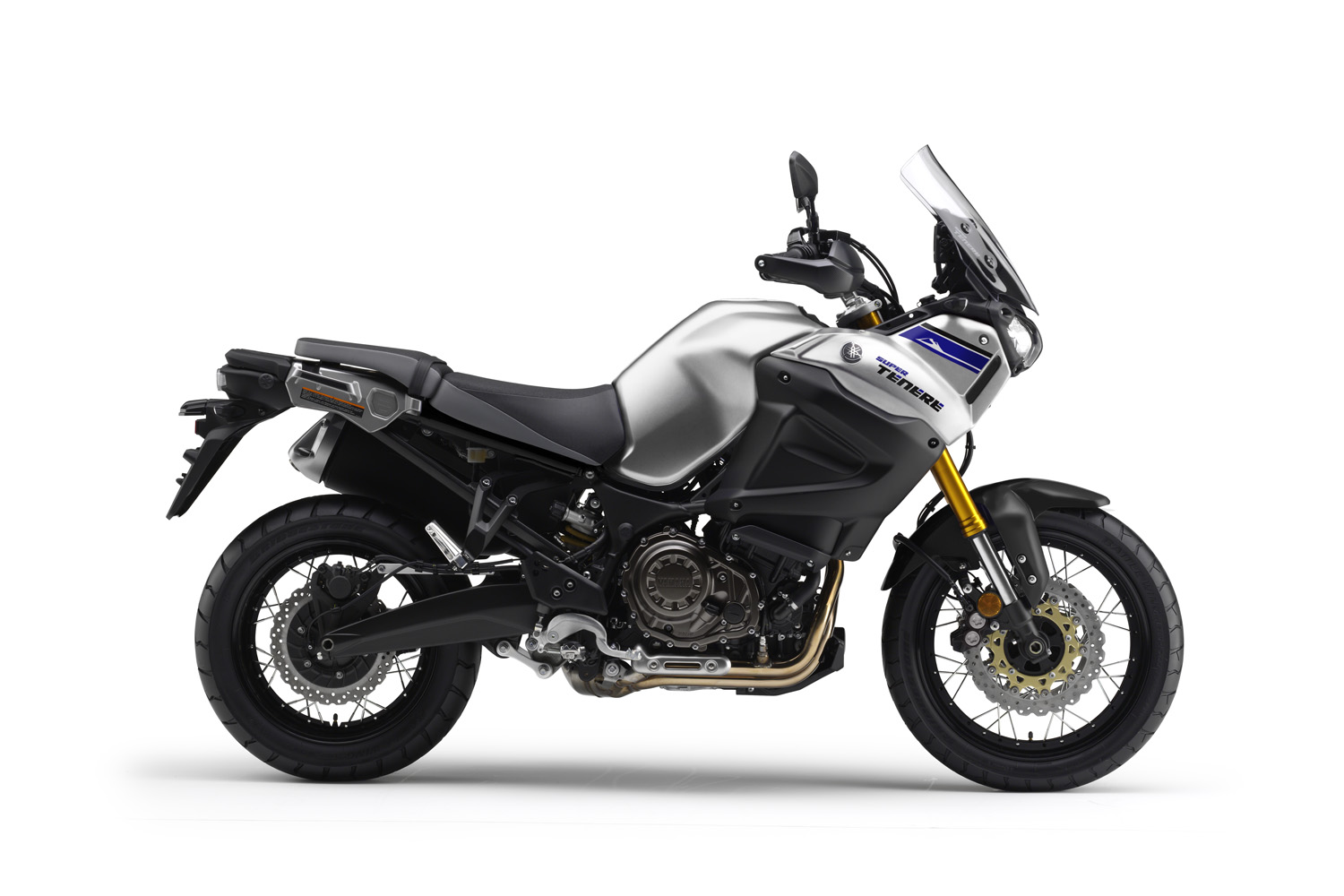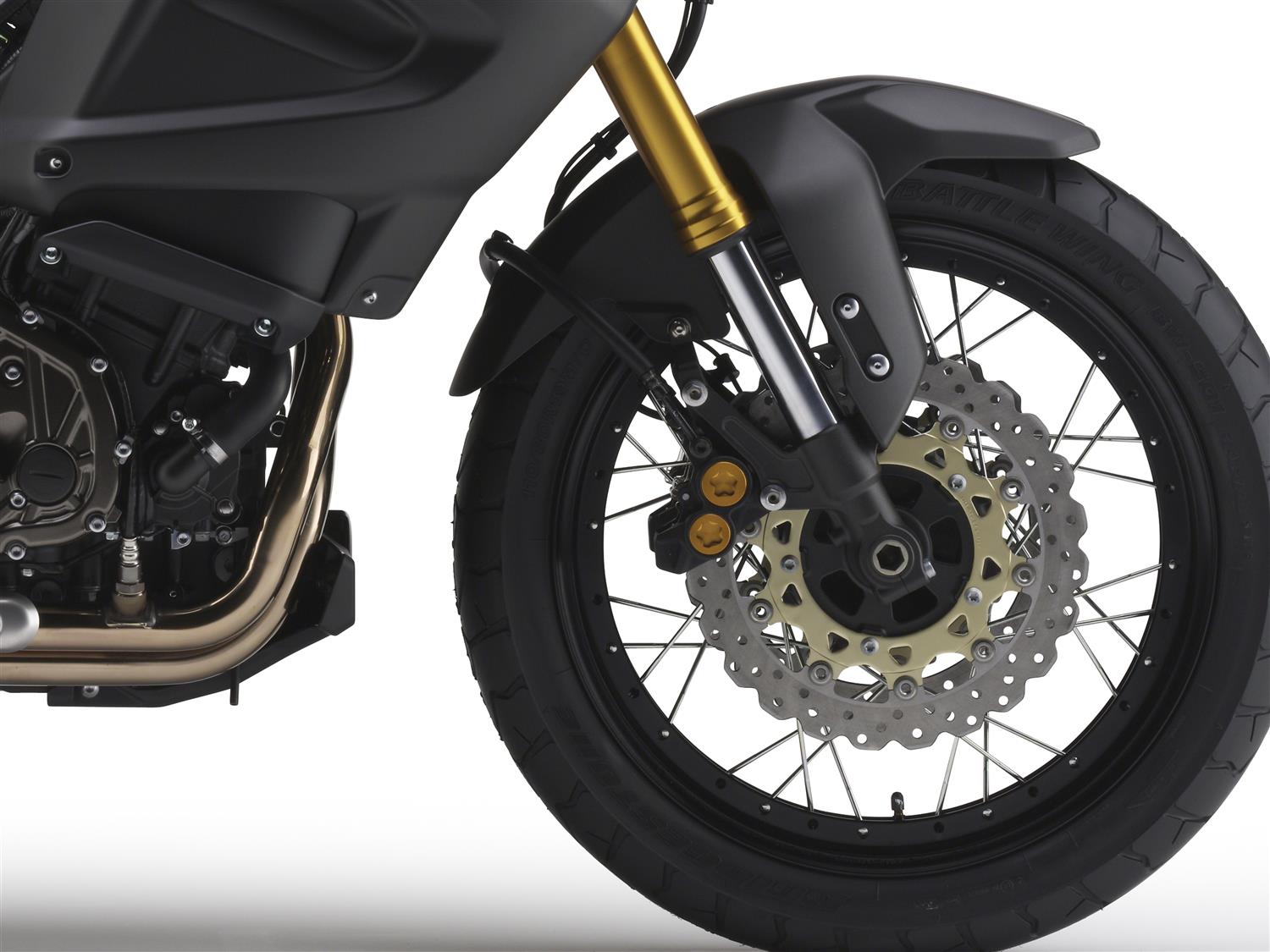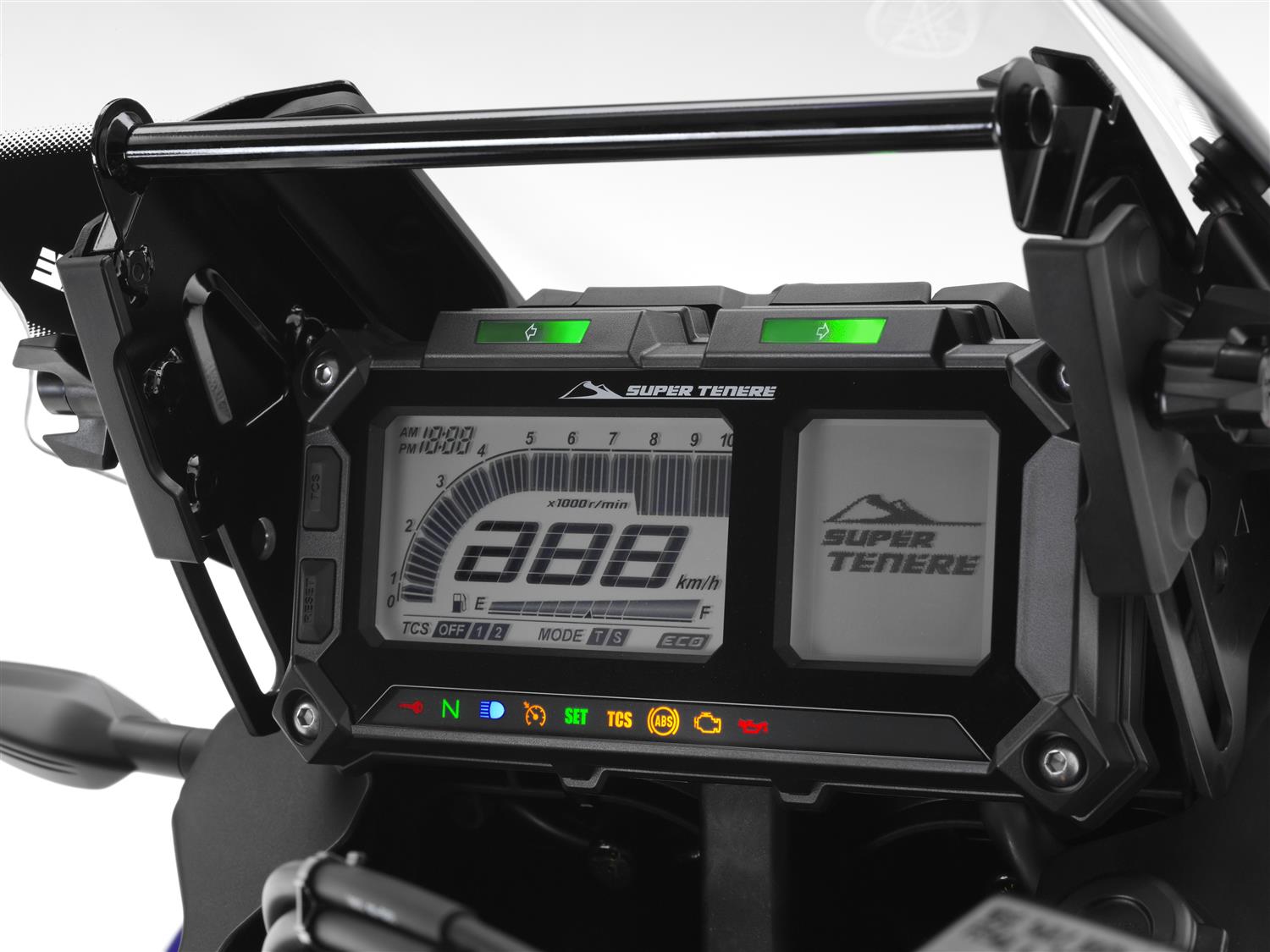




The XTZ1200 inherits the spirit of the legendary Ténéré models that drove an era of Yamaha dominance during the 1980s and ’90s in the Dakar Rally, widely known as the world’s most demanding endurance rally.
The Super Ténéré is designed to achieve a high-level balance of the qualities riders want in an intercontinental long-distance touring, including:
(1) Unmatched long distance capability
(2) Excellent dirt road performance
(3) Light and agile cornering on mountain roads
To realise the three qualities mentioned above, the engine and chassis were designed from scratch with developmental efforts focused on a centralised of mass chassis design, lower centre of gravity and the desired level of front wheel weight distribution.
Powered by a newly developed liquid-cooled 4-stroke 1199cc in-line twin cylinder engine, the XTZ1200 bristles with new control technologies aimed at offering outstanding long-distance touring performance.
The in-line twin-cylinder engine with a 270-degree crankshaft and 4-valve DOHC head sports a side-mounted radiator that contributes to centralisation of machine mass and mounted on a new frame. Also, the YCC-T (Yamaha Chip Controlled Throttle) seen on Yamaha Supersports machines now has traction control and a function enabling the rider to select running modes.
Other state-of-the-art technologies like a 3-position ABS system and adoption of a Unified Brake System are added to realise a higher level of touring performance. This is truly a model worthy of being called an ultimate machine for intercontinental adventure.
*Images are shown for reference only, product specifications and data are subject to change without notice.
One of this engine’s most interesting features — one which makes it particularly suitable for a twin-cylinder dual-purpose bike — is its 270° crankshaft and the superior traction this crank layout delivers. Because both cylinders fire closely together, traction is improved and the rider can better feel the grip at the rear tyre. This is one reason why single-cylinder engines are so widely used for dirt bikes. The 270° crank gives a twin a gutsy traction feel similar to that of a single. This technology was developed by Yamaha for use on its winning Dakar rally racers.
Allows a more compact design and aids mass centralisation for improved handling, an innovation that shortens the machine. The result is a slim and compact motorcycle with a short wheelbase that can easily negotiate narrow trails and streets.
On the XTZ1200 the engine is mounted as a stressed member, and the frame is designed to reduce rider fatigue over long distances. This is one reason that the main frame is made of steel, because steel offers both strength and flexibility. Steel is very good at absorbing road impacts. Because riders are very sensitive to the location of the crankshaft, this frame locates the crankshaft low and very close to the foot pegs. This makes the XTZ1200 feel lighter than it actually is and makes the bike easier to ride.
The dual backbone tubes extend from the steering head on each side of the engine, and the engine is mounted low in the frame at the cylinder head and crankcase. This layout not only lowers the centre of gravity of the fuel tank, it leaves space at the front for the airbox and throttle bodies and complements the straight, downdraft intake system. Another benefit is easy access to the engine and its related parts for maintenance, a feature that mechanics will appreciate. Components located far from the centre of gravity, such as the rear frame, are made of lightweight aluminium.
To ensure greater comfort in long-distance riding and ease of leg reach to the ground, a front-rear divided seat is adopted that features height adjustment (2-level adjustment with a height difference of 25mm) for the rider’s seat.
Another welcome feature for a dual-purpose bike is the combination ABS/anti-lock and unified brake systems that help prevent wheel lock during braking. This function complements the traction control system, which aims to control drive force on slippery road surfaces. This newly developed ABS/Unified Brake System unit allows the rider to operate both the front and rear brakes simultaneously by simply pulling the front brake lever. Data from wheel speed sensors at the front and rear wheels and the rider’s throttle work is used to calculate the various factors influencing the braking and automatically determine the proper amount of braking force for the rear wheel. This system also helps prevent the front and rear wheels from locking on slippery surfaces.
In order to achieve a high level of reliability in a variety of conditions, a low-maintenance shaft drive unit is adopted. This shaft drive unit is the first on a Yamaha motorcycle to use what is called a hypoid gear. This compact-design unit helps to reduce un-sprung weight and mechanical noise as well. The hypoid gear used on this model features an offset between the pinion gear and the ring gear axis that enables sufficient width of meshing gear teeth width (length) and provides the advantage of enabling the unit to be designed with a smaller ring gear diameter. (Approximately 10% smaller diameter than a conventional type for the same reduction ratio, enabling a compact rear gear case of just 176mm diameter.) This enables a reduction in rear un-sprung weight while contributing to excellent running stability.
To reduce rider workload in the rough stuff, the XTZ1200 is fitted with traction control. Both wheels are fitted with speed sensors. When the rear wheel spins faster than the front, the sensor signals the ECU to adjust the YCC-T throttle, ignition timing and fuel injection to control the power delivery to the rear wheel.
However, because the XTZ1200 is designed for riders of all skill levels, Yamaha recognises that experienced riders may use the throttle differently than less experienced riders. So the traction control feature has three modes: OFF, TCS1 and TCS2. This allows the rider to adjust the traction control to suit road conditions, rider skill level and personal preferences. This convenient feature is another example of how Yamaha's engineers made this heavyweight off-roader a very rider-friendly machine.
To answer the needs associated with an adventure tourer model like this, a lineup of specialised option parts and components has been developed simultaneously with the XTZ1200 to be sold as Genuine Yamaha Parts and accessories. These options include the following.
1) Fog lamp kit
2) High windscreen
3) Top and side cases
4) Steel pipe engine guard (protecting the cowling and the sides of the engine)
5) Grip heaters
6) Headlight protector and
7) Large aluminium skid plate (protects engine bottom).
| Engine Type | Liquid cooled, 4-stroke DOHC 4 valve, forward-inclined parallel 2-cylinder with YCCT + traction control |
| Displacement | 1199 cc |
| Bore x Stroke | 98.0 X 79.5 mm |
| Compression Ratio | 11.0:1 |
| Lubrication System | Dry Sump |
| Fuel Management | Fuel Injection |
| Ignition | TCI |
| Engine Management | EFI, YCC-T, D-MODE |
| Starter System | Electric |
| Fuel Tank Capacity | 23 L |
| Oil Capacity | 4.2 L |
| Final Transmission | Shaft drive with hypoid gear design |
| Transmission | Constant mesh, 6-speed |
| Length | 2250 mm |
| Width | 980 mm |
| Height | 1410 mm |
| Seat Height | 845 mm |
| Wheelbase | 1540 mm |
| Ground Clearance | 205 mm |
| Dry Weight | 240 kg |
| Wet Weight | 257 kg with 23 litres of fuel |
| Frame Type | Steel tube backbone |
| Suspension Front | Telescopic forks 190mm front travel |
| Suspension Rear | Swingarm 190mm rear travel |
| Brakes Front | Dual disc 310mm, ABS + unified braking system |
| Brakes Rear | Single disc 282mm, ABS + unified braking system |
| Tyres Front | 110/80 x 19 |
| Tyres Rear | 150/70 x 17 |


